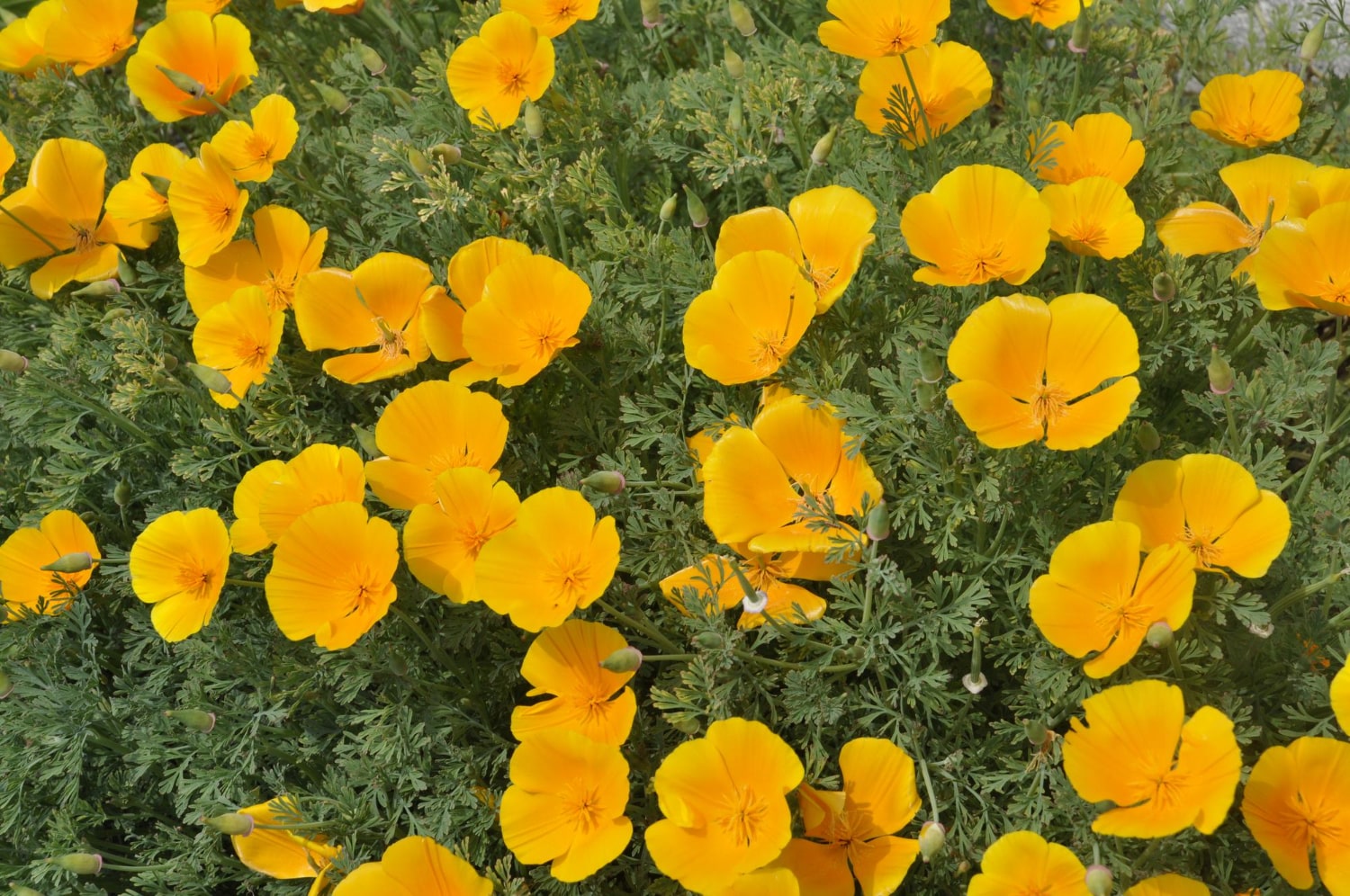Eschscholzia is not just a beautiful wildflower but a true marvel of nature, admired for its delicacy, resilience and botanical uniqueness. These plants adorn gardens, parks and open fields, transforming landscapes into sunlit carpets of color. They are easily recognized by their cup-shaped flowers that open only during daylight. Eschscholzia is cultivated for decorative purposes, used in folk medicine and studied by botanists around the world. Below are interesting and educational facts about Eschscholzia you may not have known.
- The genus Eschscholzia was named after the German-Russian botanist Johann Eschscholtz, who explored the flora of North America. He was the first to describe this plant in the 19th century. The name was adopted in international botanical nomenclature and remains in use today. Thus, the flower also serves as a tribute to a scientist.
- The most famous species is the California poppy, also known as Eschscholzia californica. It is the official state flower of California in the United States. Its image appears on emblems, logos and in many decorative arrangements. This species is the origin of many popular garden cultivars.
- Eschscholzia is native to the western part of North America, where it grows on dry hillsides, prairies and forest edges. It is well adapted to heat, poor soil and long dry periods. In nature, it often forms large, colorful flower carpets. Because of its hardiness, it is grown in dry regions around the world.
- The flowers of Eschscholzia come in shades of yellow, orange, pink or red. They open only in sunny weather and remain closed during the night or on cloudy days. This natural mechanism protects the petals from moisture and damage. It adds a dynamic and appealing character to the plant.
- The leaves of Eschscholzia resemble those of carrots or ferns due to their finely divided shape. Their silvery-green color creates a striking contrast with the vivid flowers. In addition to their beauty, the leaves help minimize water loss in hot climates. This makes them both decorative and functional.
- Eschscholzia belongs to the poppy family but, unlike true poppies, does not contain opiates. However, it has mild sedative properties and is used in folk medicine. Infusions made from the plant are used to relieve anxiety, insomnia and headaches. It is considered a gentle and natural calming remedy.
- Eschscholzia is easy to grow from seed and quickly adapts to new environments. It often self-seeds and can persist for years with little or no maintenance. This makes it a favorite among beginner gardeners due to its low care requirements. It also tolerates transplanting well at nearly any stage of growth.
- In the wild, Eschscholzia is commonly found growing alongside cacti, yuccas and other desert plants. This demonstrates its ability to thrive in arid and hot conditions. Its deep root system allows it to access water from deep in the soil. This makes it a perfect choice for rock gardens and xeriscaping.
- In some cultures, Eschscholzia symbolizes joy, warmth and hope. Its bright petals evoke the sun and the renewal of spring. In decorative art, it is used to create arrangements that carry positive meaning. The flower is not only ornamental but also rich in emotional significance.
- The seeds of Eschscholzia are extremely small and can remain dormant in the soil for several years, waiting for favorable conditions to germinate. This contributes to the plant’s remarkable durability and ability to regenerate. It can reappear year after year in the same location. It is even known to grow back after wildfires or prolonged droughts.
- Eschscholzia may be annual or perennial depending on the climate. In warm regions, it can live and bloom for several years, while in colder areas it is usually treated as an annual. It typically flowers six to eight weeks after sprouting. This makes it ideal for seasonal floral displays.
- These plants attract numerous pollinators, including bees, butterflies and wild wasps. They provide nectar and pollen in dry environments where few other flowers thrive. This supports biodiversity and contributes to healthy ecosystems. Eschscholzia is not only beautiful but also ecologically beneficial.
These fascinating facts about Eschscholzia show that it is much more than a simple garden flower. It combines strength, beauty and practical use for both people and the environment. Eschscholzia is a symbol of sunlight, life and harmony with nature. Such interesting facts inspire a new appreciation for the flowers growing right at our feet.





